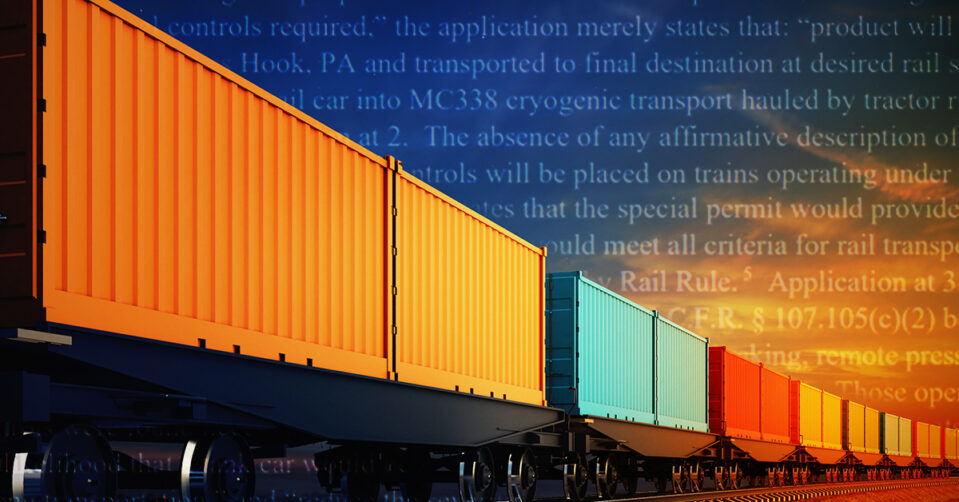Stronger Regulations Might Be Just the Ticket
Carlos E. Minaya Arnao (Communications Manager) / February 23, 2023

In recent weeks there has been increased attention to the safety of the rail systems in the United States due to a number of accidents. The Associated Press reported on the February 3 accident, in which a train derailed in East Palestine, Ohio that was carrying a mix of hazardous materials (HAZMAT), spilling vinyl chloride into the air, soil, and waterways. Ten days later in the Houston area, Houston Public Media reported a train carrying hazardous material had derailed, this time after crashing into a truck that was crossing the tracks. And on February 16 the Associated Press reported on the derailment of a freight train carrying HAZMAT in Michigan. The Federal Railroad Administration describes rail transport as the “safest method of moving large quantities of chemicals over long distances.” Industry groups like the Association of American Rail roads cite statistics showing that “[m]ore than 99.9% of all [HAZMAT] moved by rail reaches its destination without a release caused by a train accident.” And freight trains are becoming longer, prompting the Government Accountability Office to study and report on the risk these longer freights bring to communities. The potential magnitude of an accident raises concerns about the need for expanded regulatory action.
The agency responsible for specific HAZMAT transportation regulations is the Pipeline and Hazardous Materials Safety Administration (PHMSA). PHMSA oversees the Hazardous Materials Regulations. Regulatory actions at the agency over the years have, in some instances, increased the risk to communities. In 2020, PHMSA and the Federal Railroad Administration amended the HAZMAT regulations to allow bulk transport of liquefied natural gas (LNG) by rail. The administration also rolled back a rule, the Enhanced Tank Car Standards and Operational Control rule, which took a system-wide approach by providing direction to enhance the safety of rail cars carrying high-hazard flammable materials like LNG, placing notification requirements on routes between state and local officials and the railroads, and, among other standards, requiring all trains carrying high-hazard flammable materials “be operated with an electronically controlled pneumatic (ECP) braking system.” Groups like Earthjustice and a coalition of state attorneys general have advocated against the LNG by rail rule. In 2021, a coalition of 15 AGs called for that rule’s suspension, arguing that the agency had conducted a flawed analysis of the rule’s effects on greenhouse gas emissions and failed to consider the disproportionate impact of this dangerous practice on low-income, minority, underserved, and disadvantaged communities. And just this week a coalition of 14 AGs filed comments opposing a special permit request to PHMSA that would allow the transport of liquefied ethane by rail because the request was attempting to use the flawed LNG by rail rule to support its own lacking safety standards, among other reasons.
Besides the risks of a spill, there are other health concerns for communities that live near rail yards and tracks where freight runs. A 2015 study on children living and attending school near a freight rail yard showed “reduced lung function and increased airway inflammation.” As the current investigation into the Ohio disaster continues, more and more reports from residents expressing concern and fear about their health and the safety of their families have come out. The recent freight train accidents illuminate the risks of rail transport of HAZMAT and the need for improved safety guidelines and practices.
This page was updated on April 2, 2024 to better meet our accessibility standards. To see the page as it was initially published, click here.
